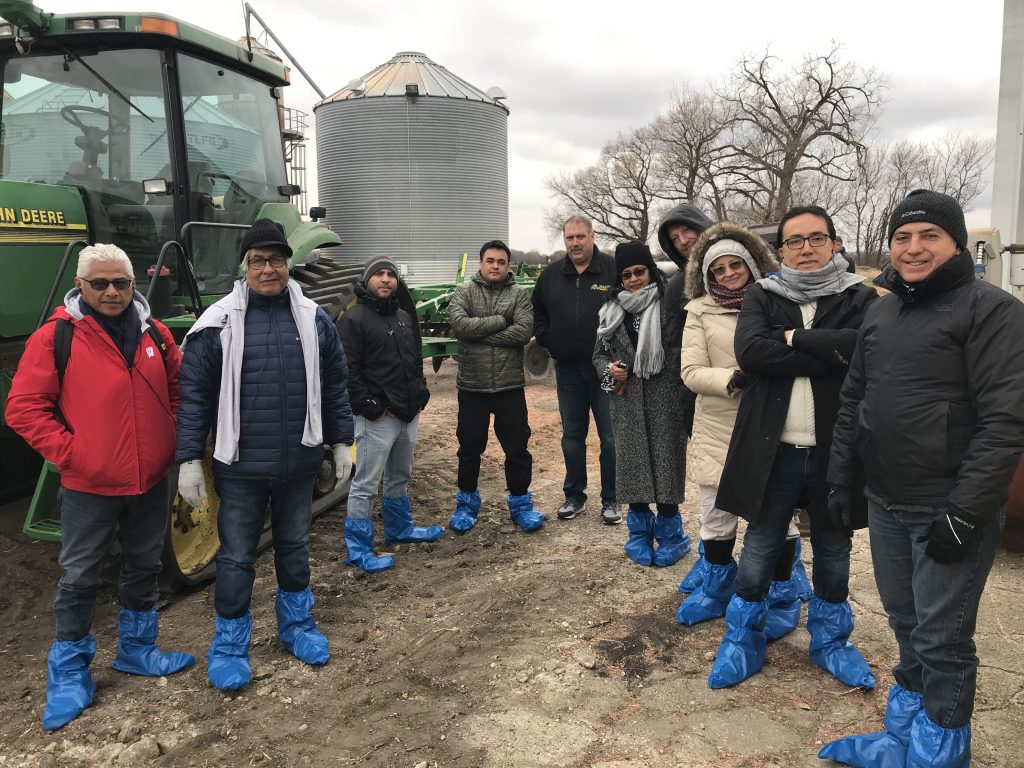A chill in the air did not damper the excitement of a team of Peruvian buyers and nutritionists who traveled to Minnesota in November – organized by the U.S. Grains Council (USGC) – to gain a better understanding of the production, quality control and usage of U.S. dried distiller’s grains with solubles (DDGS).
The Council’s DDGS promotion efforts in Peru had previously focused mainly on the largest producers in the poultry industry and dairy producers, who have been the most frequent users of the feed ingredient. Now, the Council is expanding contact to other potential end-users representing mid-size poultry companies and the beef cattle sector to create additional demand for DDGS.
For example, one livestock producer on the team produces around 30,000 metric tons of feed per month for its own poultry, swine and dairy operations. Even a low DDGS inclusion rate of 5 percent could add 1,500 tons of monthly demand for DDGS in Peru.
“We invited poultry and beef producers with very limited knowledge of DDGS and who had never used the feed ingredient in their operations,” said Ana Ballesteros, USGC marketing director for the Western Hemisphere, who accompanied the team. “Because these end-users have less knowledge, creating awareness is an important initial step for them to consider purchasing U.S. DDGS in the future.”
The mission included a DDGS nutritional short course at the University of Minnesota, visits to two ethanol plants, a feed plant producing DDGS for poultry and turkey rations, trading operations and corn farms, including the farm of USGC Secretary-Treasurer Chad Willis. At these meetings, attendees discussed corn and ethanol production in addition to how the quality of DDGS is controlled from the receiving of grain at the ethanol plant through the final loading into railcars and trucks.
“The team learned how DDGS has evolved as a product and how corn, poultry and livestock production and ethanol production are carefully linked and support each other in the U.S. corn belt,” Ballesteros said. “They also gained an understanding of how U.S. farmers produce corn with their families and the role that cooperatives and associations play in supporting that work.”
The Council will continue to follow-up with the Peruvian companies that have participated in activities like this trade team as well as seek out new potential end-users and influencers, including independent consultants and formulation companies.
“Educational efforts have proven to be effective for building knowledge and confidence among users,” Ballestros said. “The program accomplished its immediate and desired outcome of creating awareness of U.S. DDGS and an understanding of its production and usage in livestock diets.”
About The U.S. Grains Council
The U.S. Grains Council develops export markets for U.S. barley, corn, sorghum and related products including distiller’s dried grains with solubles (DDGS) and ethanol. With full-time presence in 28 locations, the Council operates programs in more than 50 countries and the European Union. The Council believes exports are vital to global economic development and to U.S. agriculture’s profitability. Detailed information about the Council and its programs is online at www.grains.org.


